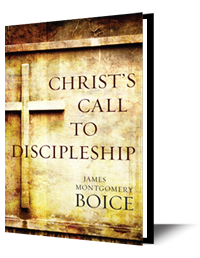The Burial of Jesus Christ - Part One
Theme: Life from death.
This week’s lessons show us that God is greater than the grave.
SCRIPTURE
Matthew 27:57-66
When it was evening, there came a rich man from Arimathea, named Joseph, who also was a disciple of Jesus. He went to Pilate and asked for the body of Jesus. Then Pilate ordered it to be given to him. And Joseph took the body and wrapped it in a clean linen shroud and laid it in his own new tomb, which he had cut in the rock. And he rolled a great stone to the entrance of the tomb and went away. Mary Magdalene and the other Mary were there, sitting opposite the tomb.
The next day, that is, after the day of Preparation, the chief priests and the Pharisees gathered before Pilate and said, “Sir, we remember how that impostor said, while he was still alive, ‘After three days I will rise.’ Therefore order the tomb to be made secure until the third day, lest his disciples go and steal him away and tell the people, ‘He has risen from the dead,’ and the last fraud will be worse than the first.” Pilate said to them, “You have a guard of soldiers. Go, make it as secure as you can.” So they went and made the tomb secure by sealing the stone and setting a guard.
LESSON
The burial of Jesus is the second of the core doctrines of Christianity listed by the Apostle Paul in 1 Corinthians 15: “For what I received I passed on to you as of first importance: that Christ died for our sins according to the Scriptures, that he was buried, that he was raised on the third day according to the Scriptures, and that he appeared to Peter, and then to the Twelve” (vv. 3-5). It occupies a significant amount of space in each of the four gospels: ten verses in Matthew, six verses in Mark, six in Luke, and five in John. But we do not generally think about Jesus’ burial very much.
Why is that? There is a natural explanation, I suppose. After the death we move on instinctively to the good news of the resurrection since so much depends on it. It is proof that the God of Abraham, Isaac, and Jacob is the true God; that Jesus is who he claimed to be, the Son of God and the Savior; that Jesus’ death was accepted by his Father as an atonement for our sins; that those who believe in Jesus are in a justified state before God; that there is power for victory over sin for all who belong to Jesus; and that those who are united to Jesus by faith will themselves be raised from death to life in heaven. But between the death of Jesus and the resurrection the gospels and epistles place the burial. Why is the burial so important?
There are several reasons why the New Testament stresses the burial of Jesus. One is obvious. The second can be found by careful Bible students. The third is not obvious at all.
1. The burial proves that Jesus was really dead. This is the obvious reason. If Jesus had not been buried or had not been not buried as he was—after the centurion had certified to Pilate that Jesus was truly dead (Mark 15:44-45); by Joseph of Arimathea, a member of the Sanhedrin, accompanied by Nicodemus (John 19:39); after a careful preparation of the body; in a new tomb that had then been sealed with a large stone (Matthew 27:59-60)—if none of this had happened, it would have been possible for skeptics to argue that Jesus had not really died, that he only seemed to have died, perhaps to have swooned, and that he was somehow able to revive and convince his followers that he had triumphed over death. That would be extremely improbable, of course, through some nineteenth century rationalists were foolish enough to suggest it. But a resuscitation like that is impossible in view of the burial and the way it was accomplished. The burial of Jesus assures us that Jesus was really dead and that his resurrection was a true resurrection.
2. The details of the burial fulfilled Scripture. The most obvious passage is Isaiah 53:9. “He was assigned a grave with the wicked, and with the rich in his death, though he had done no violence, nor was any deceit in his mouth.”
Matthew does not call attention to this verse, though earlier in the gospel he cites many other texts that he says were fulfilled by Jesus. Nor does John mention the verse, though in this same chapter (chap. 19) he refers to four other verses that he says were fulfilled at the time of the crucifixion: Psalm 22:18 in verse 24; Psalm 69:21 in verse 29, Exodus 12:46 (and others texts) in verse 36, and Zechariah 12:10 in verse 37. Nevertheless, Matthew probably has Isaiah 53:9 in mind, since he alone of the gospel writers says that Joseph of Arimathea was “a rich man” and “rich" is the critical word in Isaiah 53:9.
3. The burial has theological significance. This is the point that is not so obvious but strikes us when we study what is said about the grave in the Old Testament and about the burial of Jesus in the New Testament, mostly by Paul. Old Testament texts speak of the grave with dread, like Genesis 37:35 (“in mourning will I go down to the grave”) or 2 Samuel 22:6 (“The cords of the grave coiled around me”). Often the word translated as “grave” in our Bibles is Sheol, which has overtones of hell, as in Psalm 116:3 (“the anguish of the grave”) or Job 10:21, which calls it “the land of gloom and deep shadow.” To say that Jesus not only died but was also buried in the grave means that he descended as low as he could go in order to raise us up to heaven. H. N. Ridderbos wrote, “Jesus endured not only pain and suffering and the curse of death but even the terror of the grave, so that he could save his people from this forever.”1
Yet there is more. In Romans Paul speaks of Christians having being buried with Jesus in his death, just as they are raised with him in his resurrection. He does this while explaining why believers cannot continue in sin. For example, “We were...buried with him through baptism into death in order that, just as Christ was raised from the dead through the glory of the Father, we too may live a new life” (Romans 6:4).
When theologians work out these parallels, they have little trouble showing how we have been crucified with Jesus, raised with him, or made to ascend into heaven with him. But they have trouble with the burial. How can we be said to be buried with Christ? What does this add that is not already covered by our death to sin?
I suggest that the reason burial is an important step even beyond death is that burial puts the deceased person out of this world permanently. A corpse is dead to life. But there is a sense in which it can still be said to be in life, as long as it is around. When it is placed in the ground and covered with earth, it is removed from the sphere of this life permanently. It is gone. That is why Paul, who wanted to emphasize the finality of our being removed from the rule of sin and death to the rule of Christ, emphasizes it. He is intensifying what he said about our death to sin earlier. “You have not only died to it,” he says, “You have been buried to it.” To go back to sin once you have been joined to Christ is like digging up a dead body.
I do not think the gospel writers had this in mind when they wrote about Christ’s burial. But guided by the Holy Spirit, they were laying down as a detail of history what Paul in particular would later unfold in its full theological significance.
1 H.N. Ridderbos, Matthew, trans. Ray Togtman (Grand Rapids: Zondervan, 1987), p. 541.
STUDY QUESTIONS
- What was the importance of proving that Jesus was really dead?
- What does it mean for believers that they have been buried with Christ?
FURTHER STUDY
- Read the passages mentioned in todays lesson that were fulfilled at Jesus' crucifixion; Exodus 12:46; Psalm 22:18; 69:21; Isaiah 53:9; Zechariah 12:10.
REFLECTION
- To go back to sin once you’ve been joined to Christ is like digging up a dead body.
Think and Act Biblically from James Boice is a devotional of the Alliance of Confessing Evangelicals. It is supported only by its readers and gracious Christians like you. Please prayerfully consider supporting Think and Act Biblically and the mission of the Alliance.

















